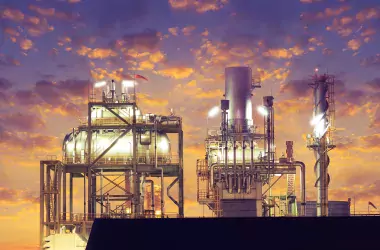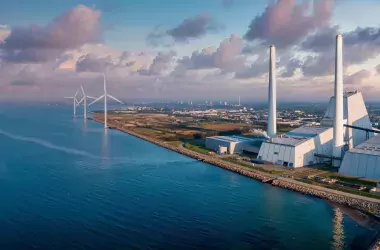Environmental processes
From flue gas treatment to water purification and by-product valorization, effective environmental processes are essential to modern steelmaking.
At Lhoist, we provide calcium- and magnesium-based products that help neutralize acid gases, treat wastewater, stabilize sludge, and recover valuable materials from steel by-products.
These solutions support steel producers in meeting regulatory requirements while optimizing operational efficiency.

Economical compliance with legislation
Flue gas, water and steel by-products must be treated to meet strict emission levels. Our steel and environmental specialists can co-develop products with you to meet regulatory requirements effectively and economically.
At Lhoist, we can help you eliminate or market certain steel by-products. For example, non-recyclable dust collected in the furnace extraction system can be inertized and applied as a strengthening material in mines. Converter slag can also be valorized for use in other markets.
Deoiling of iron sludge
The industry faces increasingly severe environmental regulation, shortages of raw materials, and high metal prices. These challenges make the implementation of dedicated processes to treat metallurgical residues and recover their valuable contents even more relevant. Oily mill scale is a typical by-product in steel manufacturing. It is possible to recover its iron content efficiently without impeding the main iron-steel flowsheet.
Engineering and technology supplier to the iron and steel industry Paul Wurth worked with Lhoist to develop an innovative deoiling process, using a low temperature pyrometallurgical approach.

Flue gas treatment
Very low emission levels are being imposed for flue gases, such as acid gases, dioxins, furans and heavy metals. To meet these requirements, you need a highly-effective reagent and process that can be incorporated into existing installations.
For flue gas treatment in a dry sorption system, SO2 and other acid gases are neutralized using hydrated lime. Our flue gas treatment range has been specially developed to increase the efficiency of dry flue gas cleaning systems and reduce disposal costs of residues.
Neutralization of acidic water
Our milk of lime neutralizes the acidic water resulting from pickling, rinsing and flue gas scrubbing. It also assures an appropriate pH level and precipitates heavy metals. Following sedimentation, the water can be recycled back into your process or returned to the sewage system.
Stabilization of sludge
Water treatment generates a certain amount of sludge. Adding milk of lime before filtration makes the sludge easier to filter. Post-conditioning of filter cakes or centrifuge sludge with quicklime facilitates handling and disposal.
Converter flue gas that contains dust is usually washed. You can treat the resulting sludge with lime and recycle the iron-containing material back into the process.
If the sludge cannot be recycled, it can be dried and solidified using milled quicklime, making it easier to handle, transport and store.

Our products
Calexor® brand products help improve productivity and enable you to comply more readily with environmental legislation.